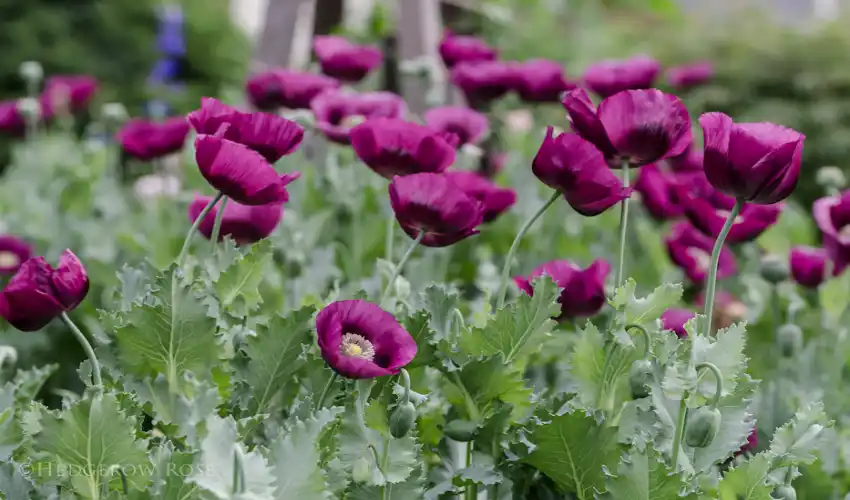Poppy pods are fascinating and versatile elements in both gardening and the herbal world. Whether you’re growing them for aesthetic purposes or using them for crafting, identifying different types of poppy pods can be a useful skill. Each variety has its unique characteristics, which make it easier to distinguish one from another. In this guide, we’ll walk you through how to identify various types of poppy pods and provide tips on recognizing their distinguishing features.
- The Basic Structure of a Poppy Pod
Before diving into the types, it’s important to understand the basic structure of a poppy pod. Poppy pods are typically spherical or conical capsules that develop from the flowers. They are filled with seeds and usually have a characteristic “crown” or “halo” at the top, where the petals once were. The size, shape, and color of the pod can vary significantly depending on the type of poppy.
- Oriental Poppy Pods (Papaver orientale)
Oriental poppies are known for their large, vibrant flowers, which range from reds and oranges to pinks and purples. These pods are typically larger and rounder than other poppy types. The pod has a smooth texture and is often green when immature. Once the pod matures, it turns a pale brown or grayish color. The crown of an Oriental Buy poppy pods is more pronounced and has a distinct, almost flat appearance.
Key Characteristics:
- Large, round shape
- Green when immature, turning pale brown
- Pronounced crown with a flat appearance
- Ranges in size from 3 to 5 inches in height
- California Poppy Pods (Eschscholzia californica)
California poppies, which are native to the southwestern United States, are smaller than their Oriental cousins. The pods are typically elongated and cylindrical, resembling a small bottle. These pods have a smooth surface and are generally pale green or light brown when mature. The shape is a key characteristic, as they often appear like tiny cones or bells.
Key Characteristics:
- Elongated, cylindrical shape
- Pale green or brown color
- Small size, around 2 to 4 inches in height
- Often has a bell-like appearance
- Icelandic Poppy Pods (Papaver nudicaule)
Icelandic poppies, known for their delicate flowers, produce small, delicate pods. These pods are round, with a slightly wrinkled texture. When immature, the pods are green and soft, and as they mature, they turn light brown. The crown on these pods is often smaller and less defined than that of the Oriental poppies, giving the pod a more understated look.
Key Characteristics:
- Small, round pods
- Wrinkled texture
- Green when immature, turning brown when mature
- Subtle crown with a less defined shape
- Opium Poppy Pods (Papaver somniferum)
The opium poppy is well-known for its role in producing poppy seeds and opium. These poppies produce large, spherical pods, often with a broad, flat crown. The surface of the pod is covered in a fine powder, which becomes more pronounced as the pod matures. The opium poppy pod is usually green during early development, turning grayish-blue or brown when mature.
Key Characteristics:
- Large, spherical pods
- Flat, broad crown
- Covered with a fine powder when mature
- Green initially, turning grayish-blue or brown
- Peony Poppy Pods (Papaver paeoniflorum)
Peony poppies are known for their double-layered flowers that resemble peonies. The pods of these varieties are usually somewhat oval or flattened. The surface of the pod is rough and textured, often covered with tiny, distinct ridges. When ripe, these pods turn a reddish-brown color, making them easy to identify in the late stages of development.
Key Characteristics:
- Oval or flattened shape
- Rough, textured surface with tiny ridges
- Reddish-brown color when mature
- Unique due to their double-layered flowers
- The Role of Seed Shape and Size
Another useful way to differentiate poppy pod types is by examining the seeds inside. The seeds of different poppy varieties can vary in size and shape, with some being larger or more angular than others. For example, opium poppy seeds are smaller and rounder, while those from Oriental poppies may be slightly larger and more oval. This difference can help you identify the type of poppy, especially once the pod begins to dry and open.
- Common Features to Look For
While poppy pods come in many different shapes and sizes, there are a few common features you should always look for when trying to identify them:
- Crown or Halo: Almost all poppy pods will have a crown or halo at the top where the flower petals once were. This can be a good starting point for identification.
- Texture: The texture of the pod is an important indicator. Some varieties have smooth, soft pods, while others may be covered in fine powder or ridges.
- Color: The color of the pod can provide clues to its identity. For instance, the opium poppy pod tends to be bluish-gray, while the Oriental poppy pod is more likely to be brown or gray.
- Size: The size of the pod can also help differentiate between types. Larger pods, like those from the Oriental poppy, are easy to identify compared to smaller varieties such as the California poppy.
Conclusion
Identifying the different types of poppy pods involves understanding their unique characteristics, such as shape, size, color, and texture. Whether you’re a gardener, crafter, or herbal enthusiast, recognizing these differences can help you select the right variety for your needs. By paying close attention to these features, you can confidently identify and enjoy the beauty and usefulness of different poppy pods.
